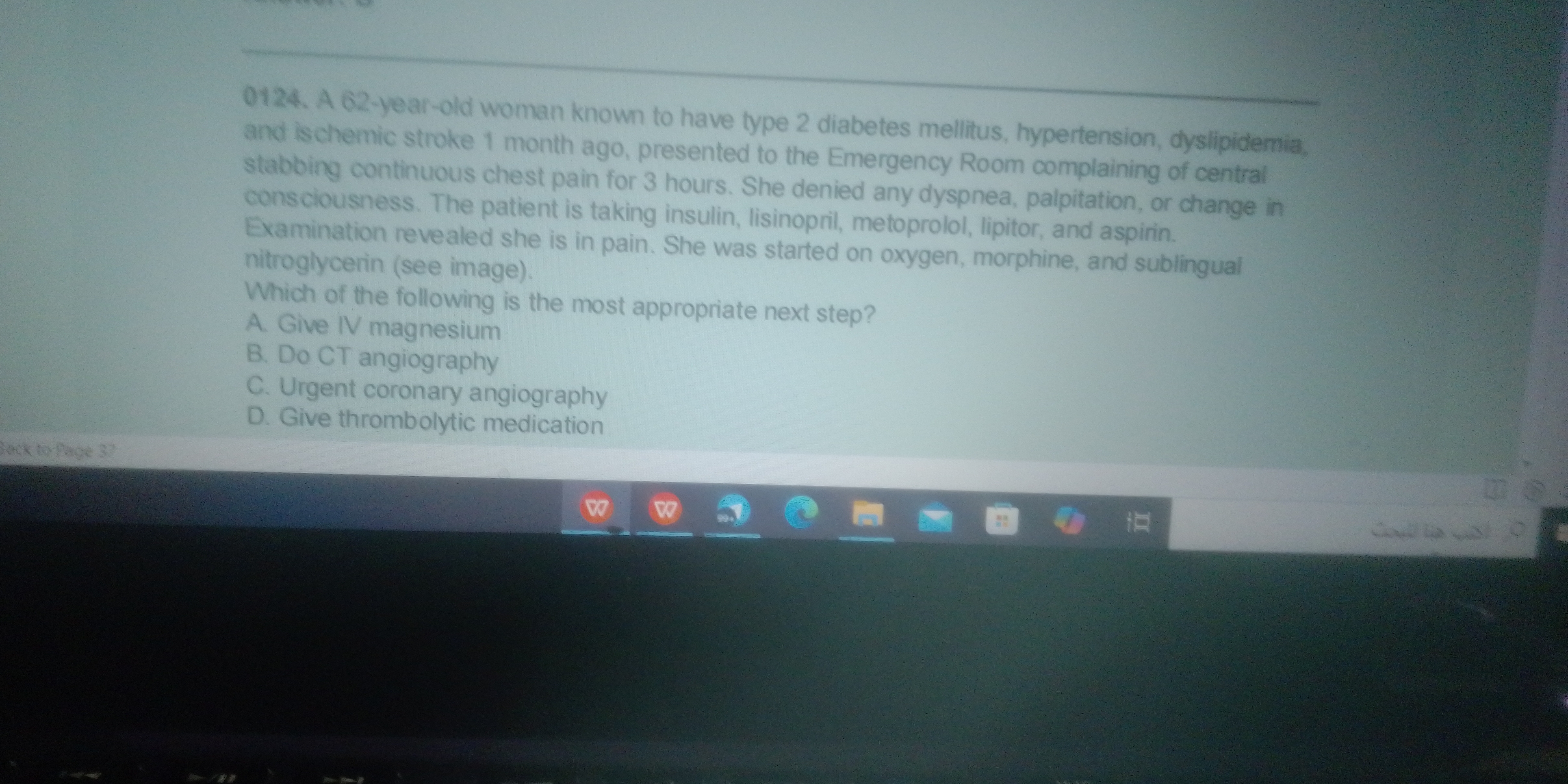A 62-year-old woman known to have type 2 diabetes mellitus, hypertension, dyslipidemia, and ischemic stroke 1 month ago, presented to the Emergency Room complaining of central stab... A 62-year-old woman known to have type 2 diabetes mellitus, hypertension, dyslipidemia, and ischemic stroke 1 month ago, presented to the Emergency Room complaining of central stabbing continuous chest pain for 3 hours. She denied any dyspnea, palpitation, or change in consciousness. The patient is taking insulin, lisinopril, metoprolol, lipitor, and aspirin. Examination revealed she is in pain. She was started on oxygen, morphine, and sublingual nitroglycerin. Which of the following is the most appropriate next step? A. Give IV magnesium B. Do CT angiography C. Urgent coronary angiography D. Give thrombolytic medication

Understand the Problem
The question is asking for the most appropriate next step in the management of a 62-year-old woman with multiple health concerns who has presented to the Emergency Room with specific symptoms. It involves evaluating the options provided in the context of her medical condition.
Answer
Urgent coronary angiography.
The final answer is Urgent coronary angiography.
Answer for screen readers
The final answer is Urgent coronary angiography.
More Information
In the setting of chest pain with a history of diabetes, hypertension, dyslipidemia, and recent ischemic stroke, the most appropriate next step is urgent coronary angiography to evaluate for acute coronary syndrome.
Tips
A common mistake is not considering the urgency of diagnosing and treating potential acute coronary syndromes, particularly in high-risk patients.
AI-generated content may contain errors. Please verify critical information